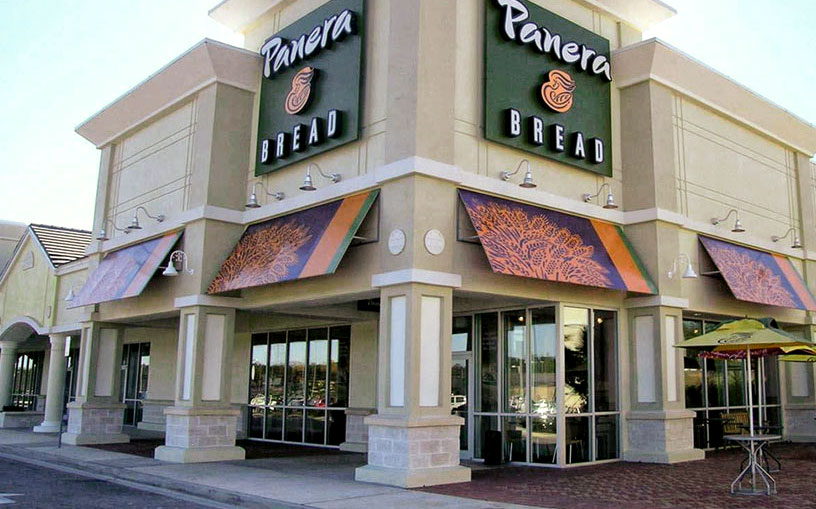After a not-so-stellar year for the restaurant industry—with the second-worst Q3 in five years and declining comp sales and traffic in limited service—many limited-service operators are ready to put 2017 behind them. And with the economy now growing at a slow-but-steady pace, the horizon’s already looking brighter.
Here are four market forces that could shape restaurants’ financial future in the year ahead.
The overall economy will grow
Economists at industry insights firm TDn2K are predicting 2.5 percent gross domestic product growth over the coming quarters, which is welcome news for an industry that relies heavily on disposable income. Add to that a steadily dropping unemployment rate and high consumer confidence, and it’s easy to expect that 2018 will be a fairly healthy year.
“If anything, the indicators are showing some strength in a lot of ways,” says Victor Fernandez, executive director of insights and knowledge at TDn2K. He adds that the firm projects revenue growth to reach around 2.8 percent for 2018.
Quick-service giants in particular are seeing success, as evidenced in part by their strong stock performance in 2017. Over the past year, McDonald’s valuation rose from $119 to the mid $160s per share by early November, while Yum! Brands rose from $63 in January 2017 to nearly $80 by November.
“Those businesses are being valued at two times the valuations they used to trade at and carry some pretty significant premiums right now,” says Andy Barish, managing director of equity research at investment banking firm Jefferies.
Mergers and equity capital injections will continue
While Barish doesn’t expect a lot of activity on the IPO front in 2018, he does expect that the current M&A and private-equity investment frenzy will continue throughout the year.
“That’s going to be strategically the way that some companies feel as if they can compete more effectively or get more scale,” he says of quick-service mergers, like the purchase of Popeyes by Burger King’s parent company last February and, more recently, Panera Bread’s acquisition of Au Bon Pain.
But investor confidence in large publicly traded brands—along with mergers and equity investments—will continue to create a “rich get richer” climate in which strong brands will see even greater success while weaker brands continue to struggle.
“There’s hyper competition, and that will persist, so there will be very clear winners and losers. I think you’ll see a continued shakeout of the best-of and then everyone else,” says Andrew Feinberg, restaurants and foodservice leader at Deloitte Consulting.
In the meantime, an oversaturation of limited-service brands will persist, Fernandez says. He adds that the restaurant landscape encompasses too many restaurant concepts and locations, meaning some closures are all but inevitable.
The battle for the best workers will intensify
With a low unemployment rate—hovering at around 4 percent and expected to remain there for the rest of the year—it’s becoming more challenging than ever to find and retain talented employees.
“There aren’t a lot of people out there without jobs, so we’re competing for talent with each other, and the pressure on wages will be a challenge,” Fernandez says.
But, despite several minimum-wage increases taking place this year—14 states are enacting increases this month alone—Fernandez doesn’t expect disposable income to grow significantly in 2018. “For a while there, you had some growth just based on people getting jobs,” he says. “As we go toward full employment, that goes away a little bit, so [disposable income growth] would have to come from people making more from their jobs.”
A new forecast from human resources association WorldatWork predicts tempered growth in salary-increase budgets for U.S. employers in 2018 (3 percent on average), meaning any gains in disposable income may need to come from another source, such as tax reform.
While it’s certainly a hot-button issue—and beneficial to the industry if it puts money into the pockets of lower- or middle-income consumers—TDn2K doesn’t expect any potential tax reform benefits to pay off until later this year at earliest.
Technology will redefine the restaurant
Workforce pressure is also forcing restaurants to invest more heavily in technology, not only to increase productivity and efficiency, but also to attract customers and quality employees. Technology investments in the off-premises market are poised to grow in the year ahead.
“Thinking of the industry overall—and specifically quick service—next year and beyond, that off-premises market only becomes more important,” says Hudson Riehle, senior vice president of research for the National Restaurant Association.
But technology doesn’t come cheap, as many brands implementing new programs and products will learn. “That’s been costing a lot of quick-service brands money and will likely continue to as they invest behind some of those areas for 2018, with hopefully some path for incremental sales with delivery and online ordering,” Barish says.
Despite the challenges, opportunities do exist, and many industry experts are bullish about the year ahead—to an extent.
“What ‘good’ and ‘bad’ mean is different nowadays. Even the strongest of years will probably not be as strong as we’d like,” Fernandez says. “What we’re optimistic about is better results than what we saw in 2017 for sure, and hopefully better than 2015.”












